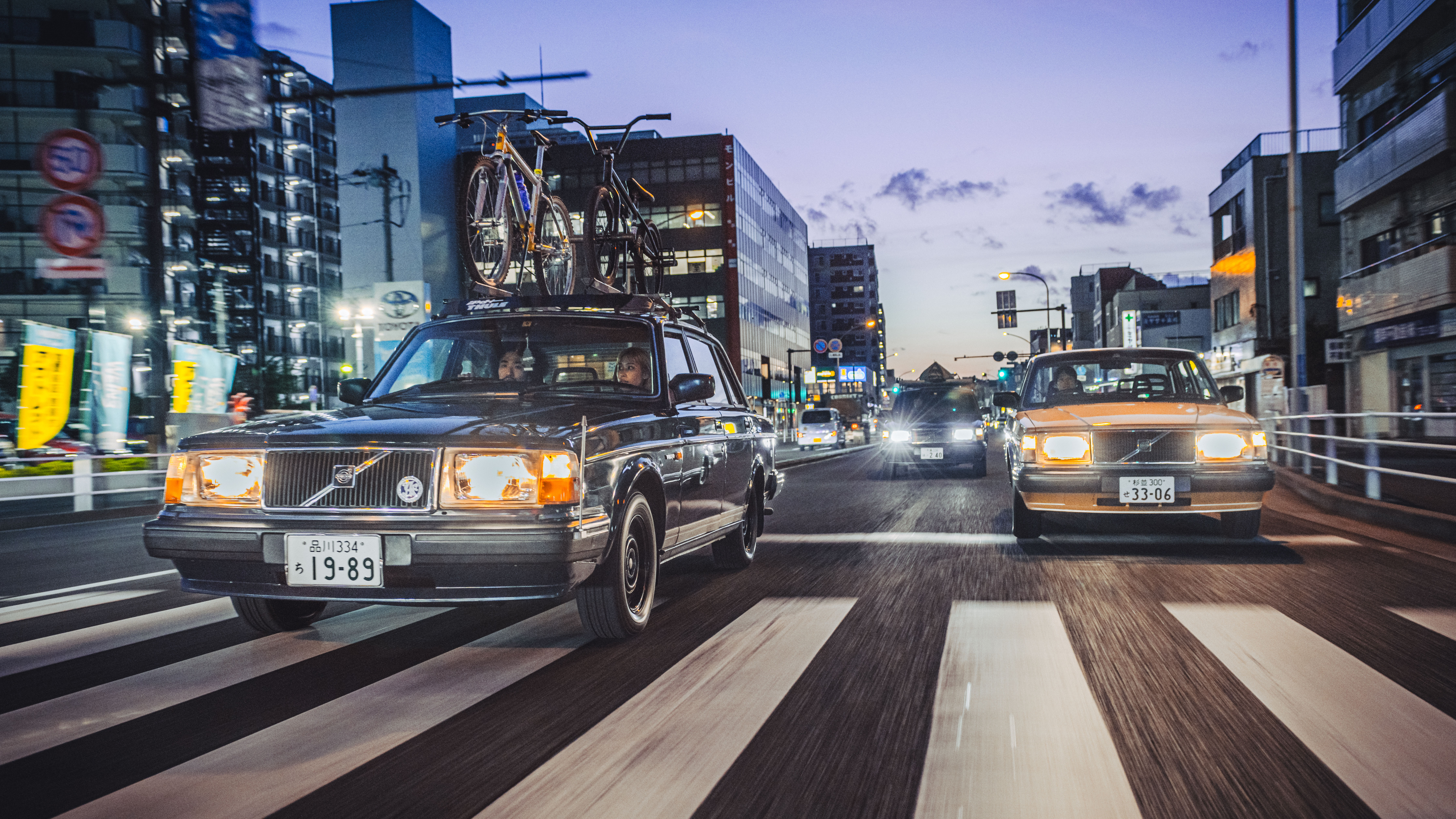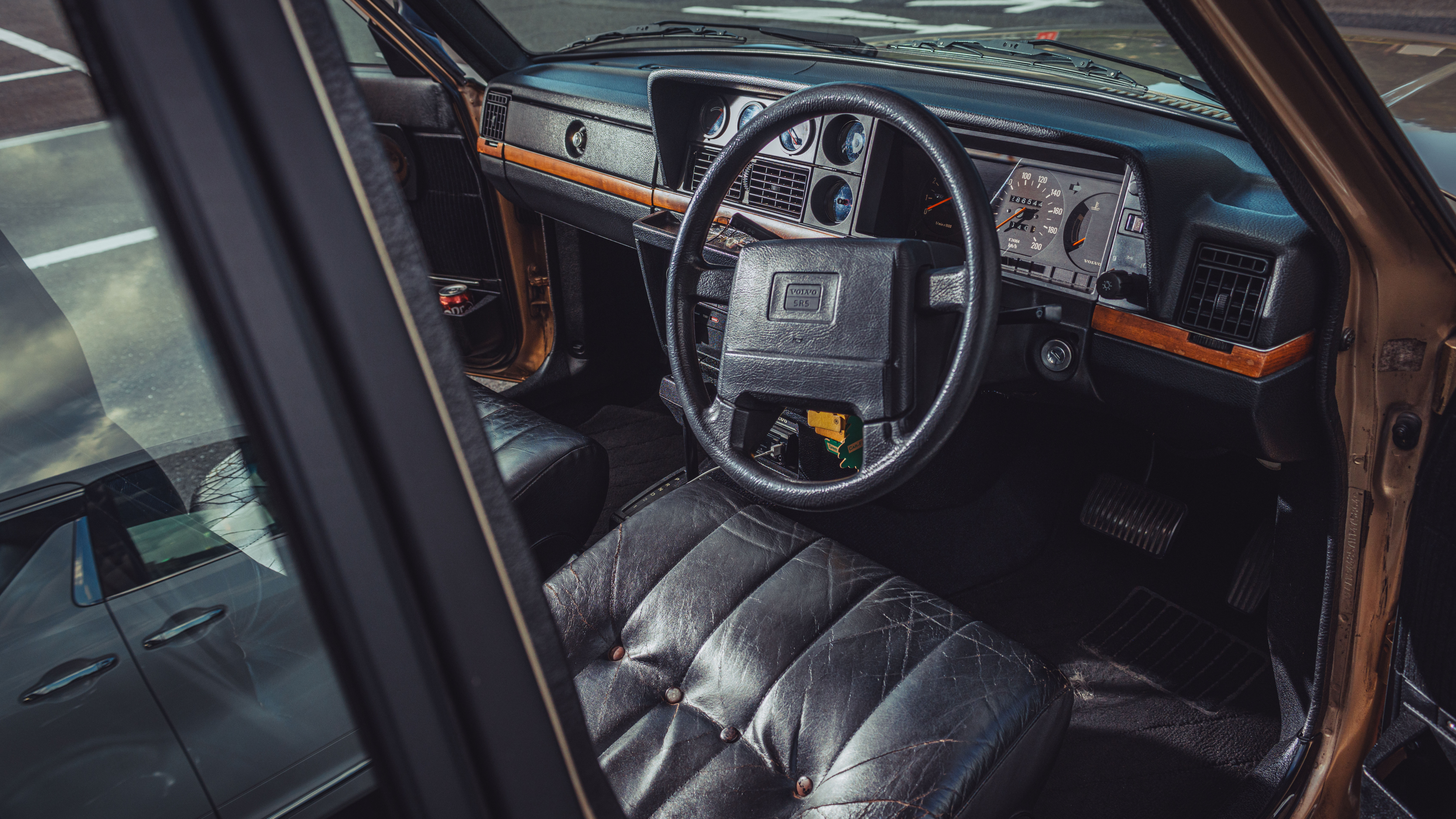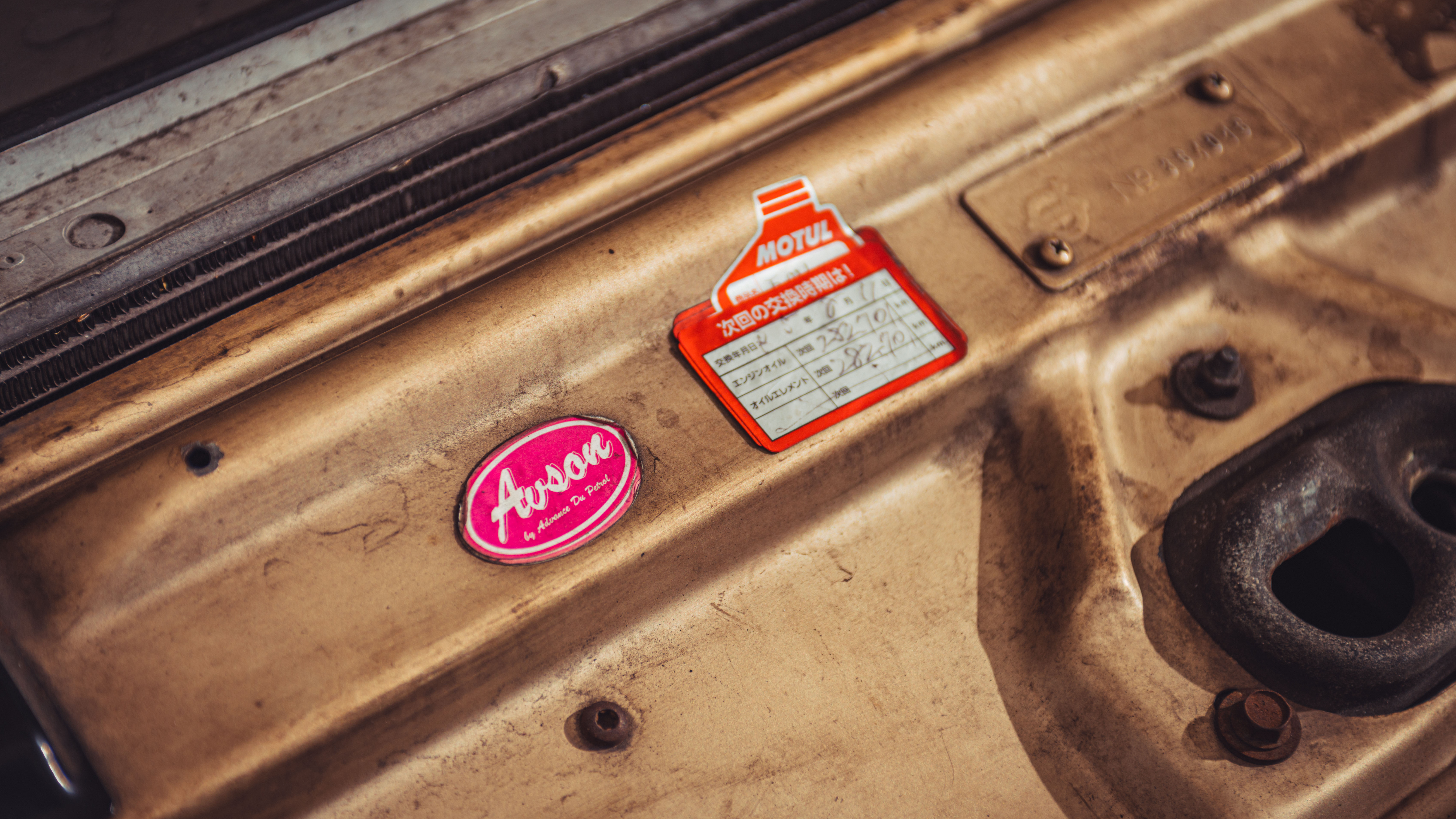
Need for Swede: checking out Japan's new-found love of... old Volvos
There’s a new car culture emerging in Japan, one that celebrates old, slow, Swedish barges
Traditionally it’s trolls that lurk under bridges – or possibly Japanese oni in this case, seeing as we’re approaching an underpass on the outskirts of Tokyo. It’s certainly not a usual hangout for super cool Japanese young people. But when subcultures form, they tend to stick to the fringes of society, and this one is no different. The body language and capillary action of the cars is the same as any other car meet though – people drawn together in loose groups, pointing at bits of car, laughing and joking, standing back to admire, leaning in to inspect.
Except that the cars themselves aren’t the usual highly modified or expensive representatives of the traditional scenes. In fact, they’re remarkably unremarkable. But that’s the thing here – in a society driven by outrageousness and shock value for the ’gram, the coolest Japanese have turned sideways and embraced the chunky cardigans of the car world: old Volvos.
It will come as no surprise to anyone who has more than a passing interest in cars that Japan is really good at car culture. For a relatively small island, the whole place throbs with an undercurrent of autophilia that you only get in certain parts of the USA, fomented both by historically strong domestic car production and the sense of car-based personal freedom.
Photography: Toby Thyer
But Japan’s car culture is broader and deeper than you imagine. A tree of life with wheels. The trunk encompasses the masses, the workaday, while the edges fracture into smaller and more delicate branches, fractals of subgenres that become increasingly fragile. And Japan’s car scene is really good at it – if you can conceive it, there’s probably a gathering.
From Group B rally enthusiasts to bosozuku gangster cars, kyusha (period correct) to cartoonish kaido racers. There’s Shakotan-style and flashy dekotora trucks, lowriders, hotrods and much kei car enthusiasm, not to mention the usual supercar and performance marque-specific clubs. But one that doesn’t seem as exotic, at least to European eyes, are the people who like pensioner spec Volvos.
Specifically Volvo 200 Series ‘bricks’, the matronly saloons and estates that peppered middle class driveways from 1974 to the early Nineties. And we’re talking stock items here, not modified. Yes, you could try for a sexier Bertone Volvo 262C, vinyl topped Coupe or some two-door saloon action from the same period, but they’re almost too trendy. It’s the very ordinariness that seems to make everyone smile. And smile they do. A lot.
In fact, the welcome for a bunch of too-hot Top Gear types who insisted on meeting in this random spot is nothing short of heartwarming. Smiles and hugs and fist bumps, the one and only connection a love of cars. We don’t speak each other’s language, but we understand each other. A reminder of the power of cars to bring people together.
Hirofumi Miura, Hiro to his friends, owner of a very car-related surname and a slick burger shop called Central Burger in Yokohama, explains something of why we’re here. “Originally I just wanted an ordinary delivery vehicle which was cheap, and I noticed that people my age didn’t drive these sorts of cars, and that appealed.
"It’s multipurpose – a cool Nineties car that I can take to the supermarket or go on dates and drive comfortably for a long time... they’re just fun cars, they suit my slow life personality. Driving slow, taking it easy – that’s the purpose.” Hiro laughs to himself at this, as if the ‘slow life’ is a quiet and secret joke – but I think he’s got it nailed.
This is a theme that crops up more than once when talking to these JDM Volvoisti – the slow life. A renunciation of the arms race of performance and show in favour of something that’s ended up as counterculture by conformity. Takehisa Nakegawa, who deals in surfboards for a living and runs a dark green wagon with monster roof rack, has a similar outlook to Hiro. “I wanted something I could use for work, something with character, and I found this. The angular shape is cool. Cars these days are all kind of round, right? So the car with corners stands out.
"Volvos are solid and... gentle. This one’s ended up as a family member – I think I’ll probably just drive it forever.”
Top Gear
Newsletter
Thank you for subscribing to our newsletter. Look out for your regular round-up of news, reviews and offers in your inbox.
Get all the latest news, reviews and exclusives, direct to your inbox.
So there’s passion here, it’s just a more familial, more considered kind of car enthusiasm. Which is slightly off-kilter with the usual tropes of Japanese car scenes. Of course, Volvo 200s have grown their own following in Europe as a kind of anathema to flashy, overblown sports cars, renowned for all the seemingly boring words like comfort, safety and practicality.
Among the usual attention grabbers a standard Volvo 240 wagon is a deliberate swerve. An abdication of the ‘look at me’ in favour of something so regular it becomes blandly iconic. But that’s exactly where they seem to appeal to a certain type of younger crowd in Japan that essentially like good product design. If a Volvo is designed to be comfortable, safe and practical and it is all of those things, then it’s a good product. And good products always find their fans. Eventually.
And that’s the thing about Japanese car culture and what makes it so special – it’s a living thing. It changes and evolves over time, adapting and growing as tastes and fashions change. From the street racing roots of the Midnight Club (Tokyo’s infamous Middo Naito Kurabu) to the tuning scene and from there to the customisation and aesthetic boundary pushing, Japan doesn’t stay static.
All the Volvo enthusiasts are doing is embracing another niche, albeit a calmer, more soulful ideal. In fact, the very fact that the brick is unpopular is the basis for its niche popularity – in Japan, being different is cool. Should old Volvos reach that unspecified tipping point of having lots of fans, the early adopters would likely move on, but that’s unlikely to happen; there aren’t that many cars for people to actually adopt.
That's the thing about Japanese car culture; it's a living thing
Takumi Uchida straps his BMX bikes to the roof of his black saloon to tote them around his favourite spots, and he’s a mean rider, casually flicking his bike into the air like a wheeled gymnast. But he’s got strong opinions on why an older Volvo makes the grade. “They can’t really go very fast, so it’s easy to say ‘OK, let’s take it easy’ – mine may be a bit shabby, but it’s still cool, easy to fix and you don’t see that many of them in Japan, so I wanted one.
"I actually bought this just looking for the cheapest car I could find – I was buying a Nissan Y32 Gloria, but the deal fell through and then I found this. And then you drive one, and you think about keeping it for a long time...”
Which brings us to the other aspect of Japanese Volvo parenting; the idea that Volvos can keep going. Naoya Tsukamoto, who’s brought his mate’s golden hued saloon down, is a car photographer from Tokyo. “I don’t know why, but northern European culture is really popular in Japan. We love Volvos and IKEA. And Japanese people think that Volvos are really strong and tough – have a big crash and you’ll survive in a Volvo.
"We Japanese also have a word, mottainai, which sort of translates as ‘what a waste’ – to keep something going is a good thing. Volvos fit the spirit of mottainai – they just keep going, and that appeals to a lot of Japanese people. But they’re also gentle to drive, and that’s just... nice.”
There’s those words again, ‘gentle’ and ‘nice’ – not usually the ones you want associated with your car, but ones that work in this context, with these people. Along with the slow life practicality, there’s definitely a theme, even given the vagaries of translation. Old Volvos in Japan aren’t necessarily just about what they are, but what they represent. Safety, security, relaxation, practicality and longevity. You don’t have to compete with anyone else if you drive a Volvo brick, because you’re not even in the same race. In a world that chases instant gratification and four-digit horsepower figures, pottering about in a 1993 Volvo estate is the equivalent of a quiet room and a back massage.
But the thing here is that the people who are into these cars are all so chilled, they really don’t see how cool they are. They’re not bleeding edge hipsters who are trying to make some sort of ironic point by wearing their grandparents’ clothes and shopping from thrift shops. They just love the cars and don’t really care what anyone else thinks. And that sense of self, that slow life confidence, is what cool is all about.
It’s not about what you wear or drive, but how. An old Volvo and a heap of good vibes may not be what some would consider cutting edge, but when you spend some time immersed in it, it turns out that this niche is probably one of the coolest of them all.
Trending this week
- Car Review
BMW 1 Series
- Top Gear's Top 9
Nine dreadful bits of 'homeware' made by carmakers











